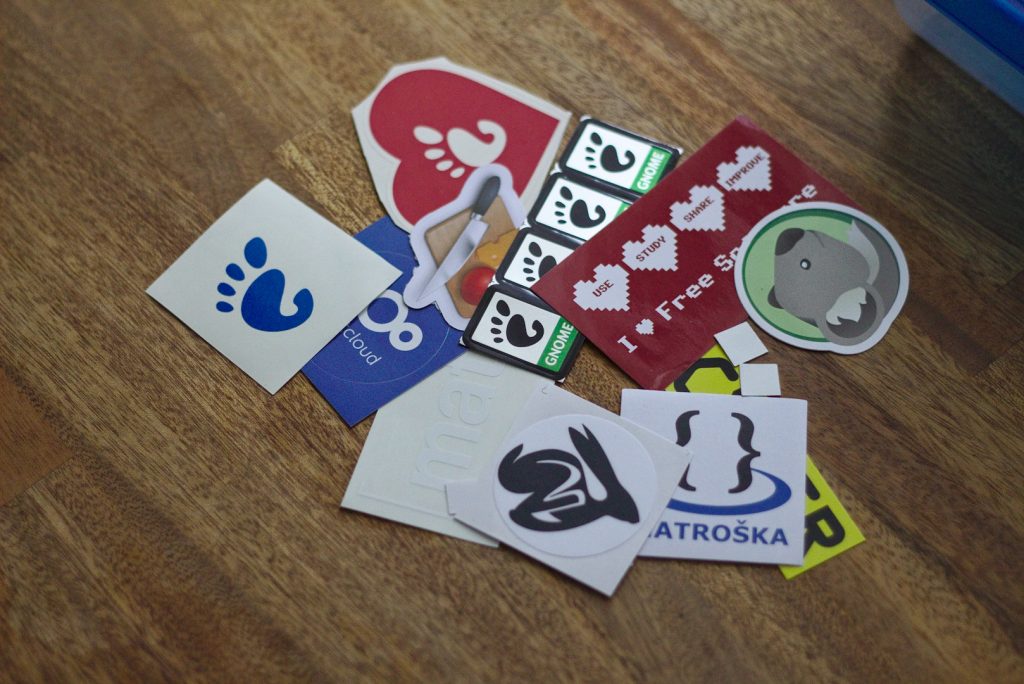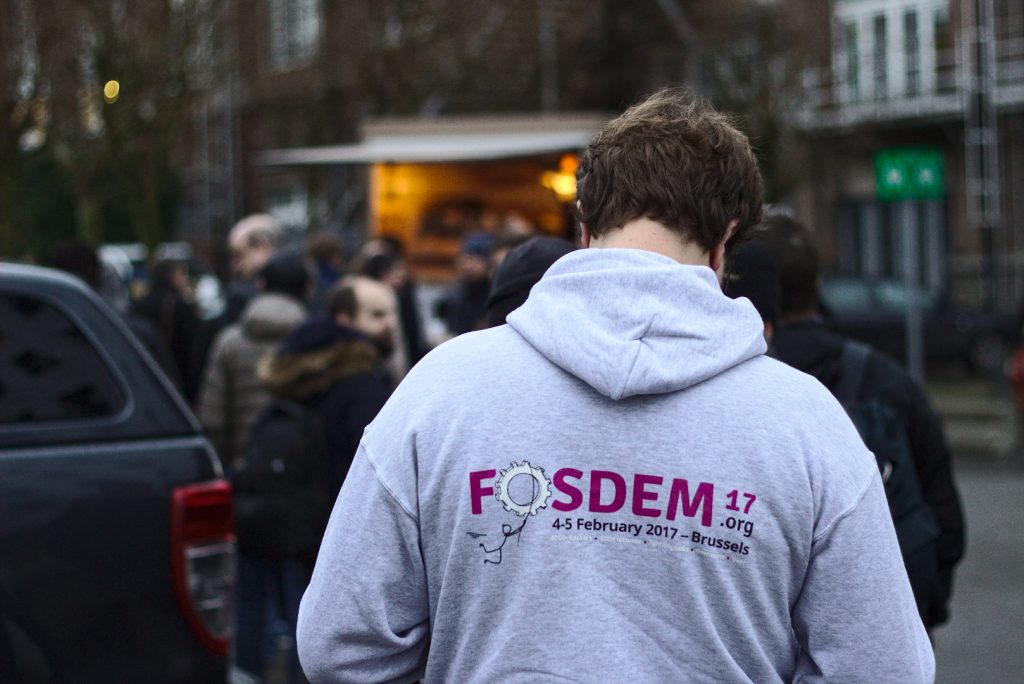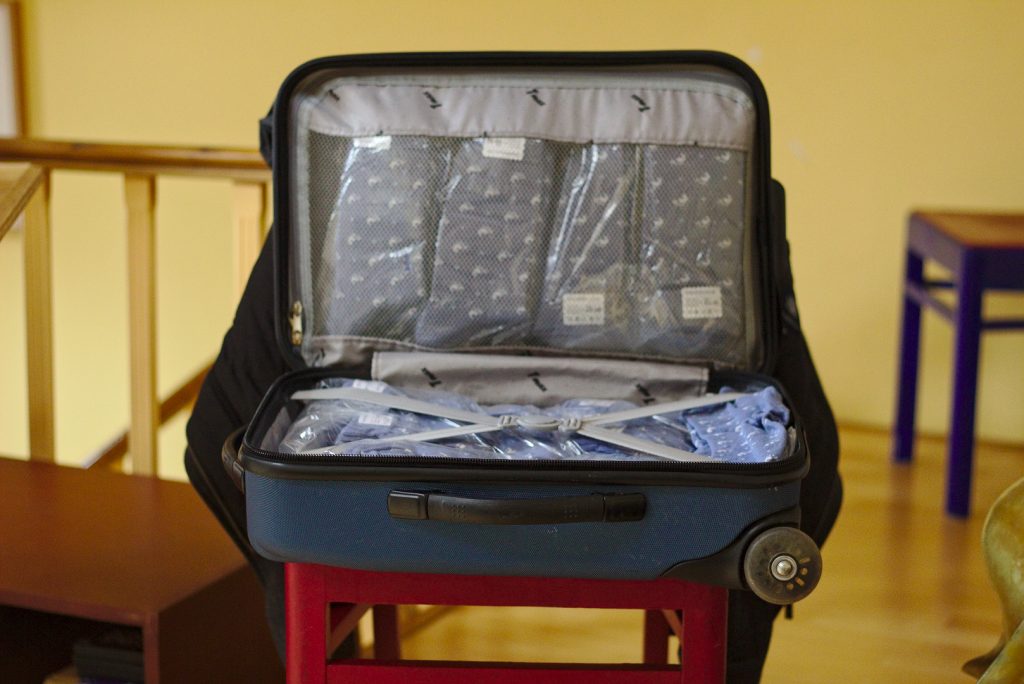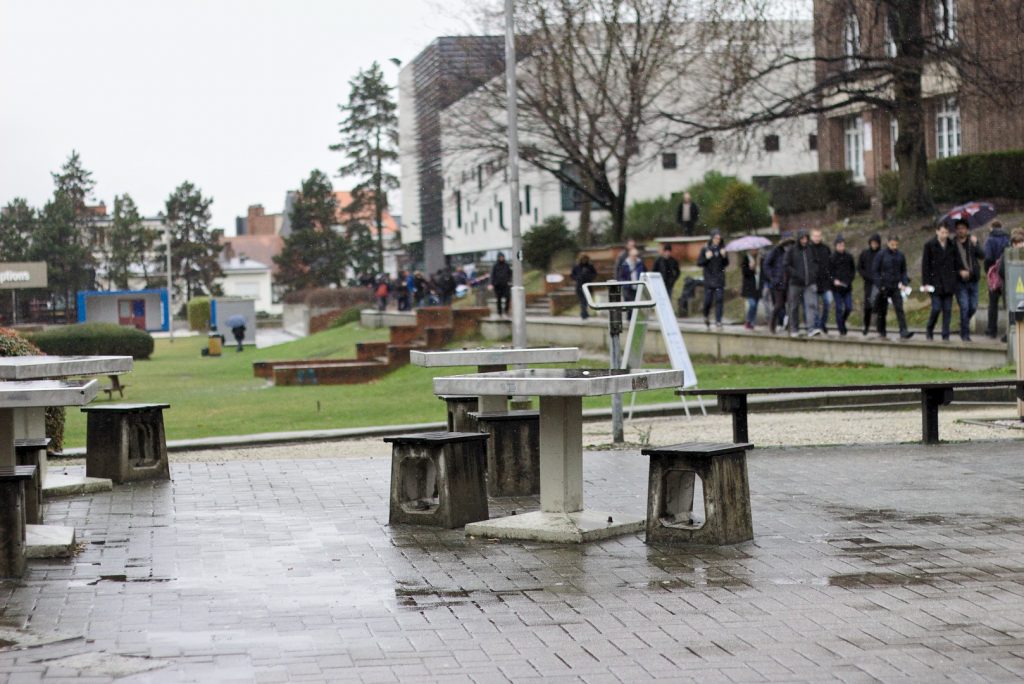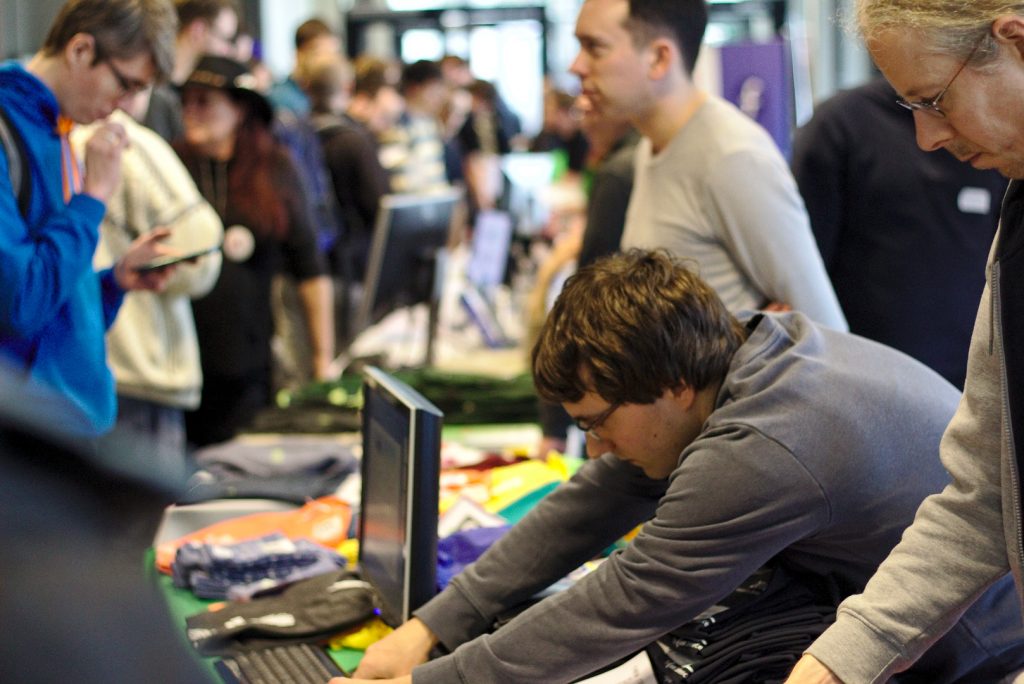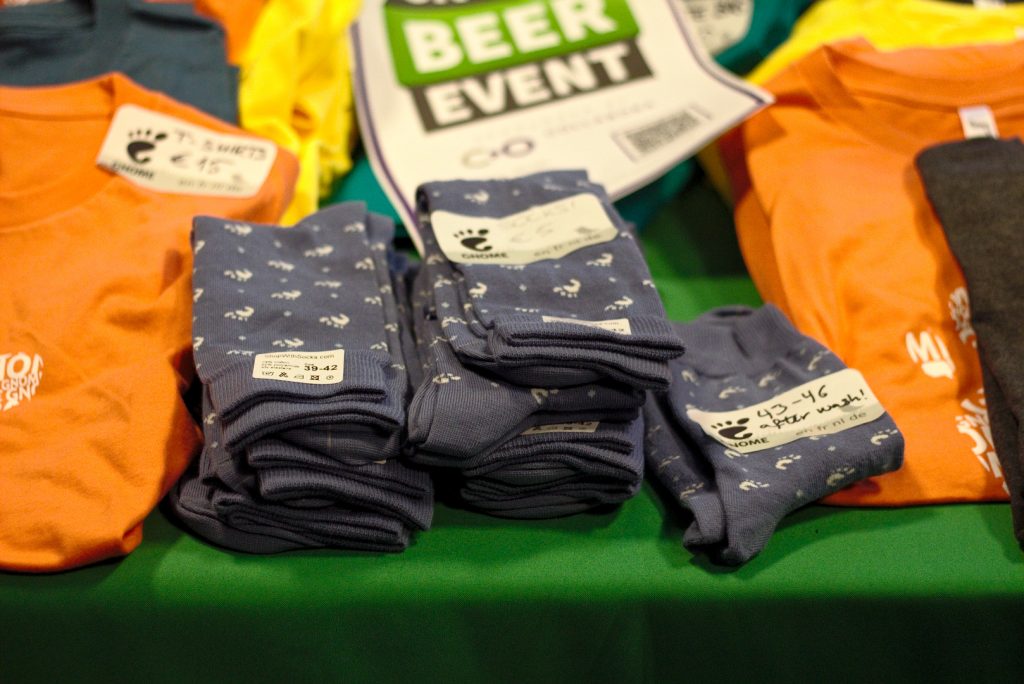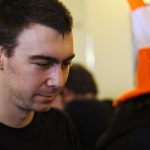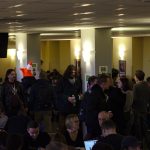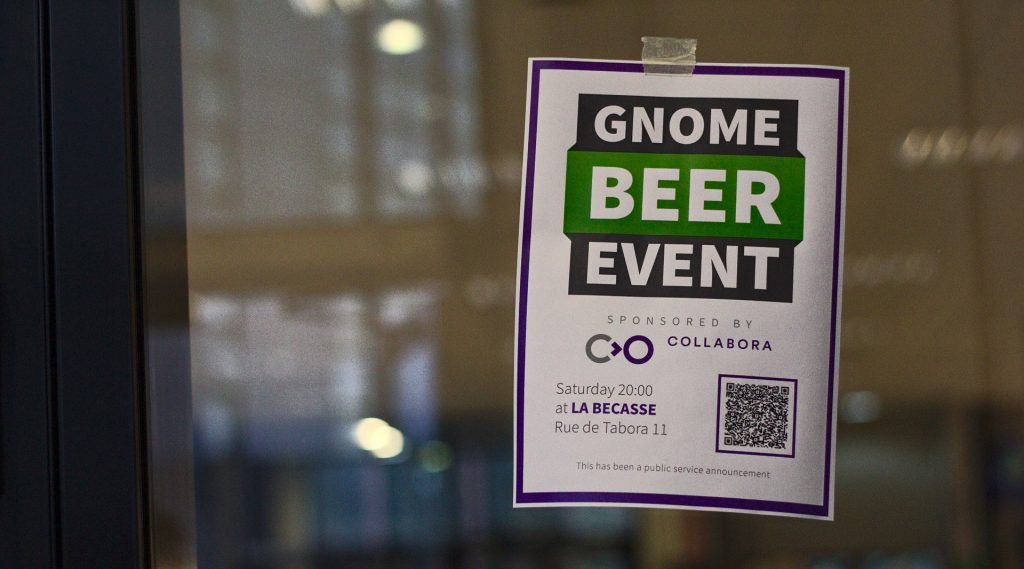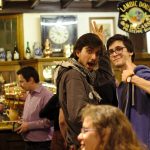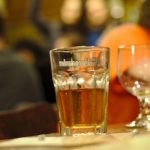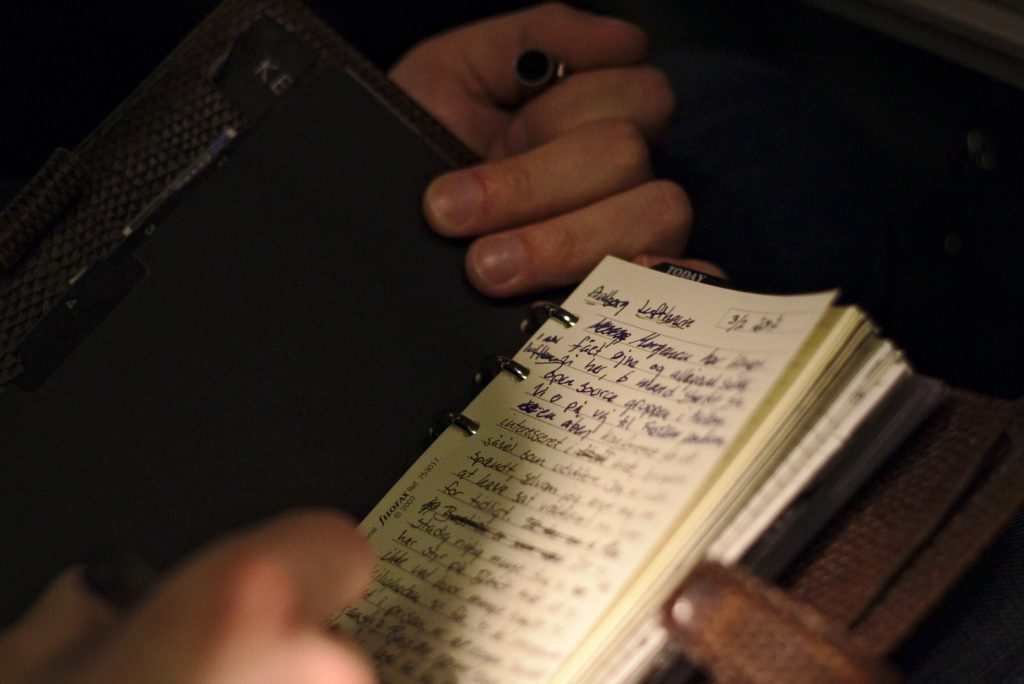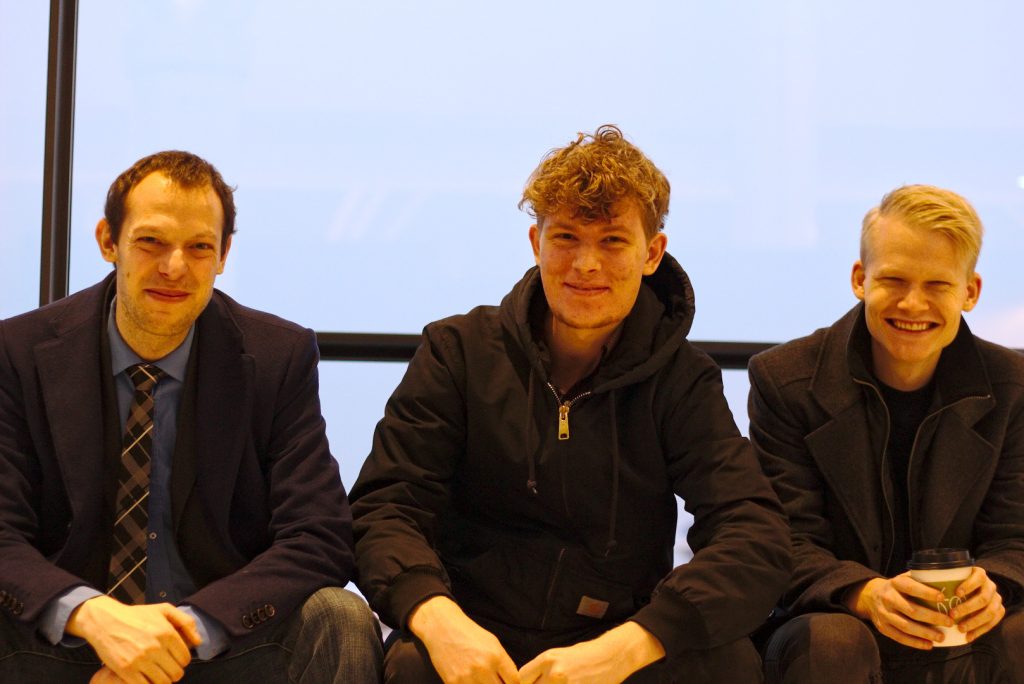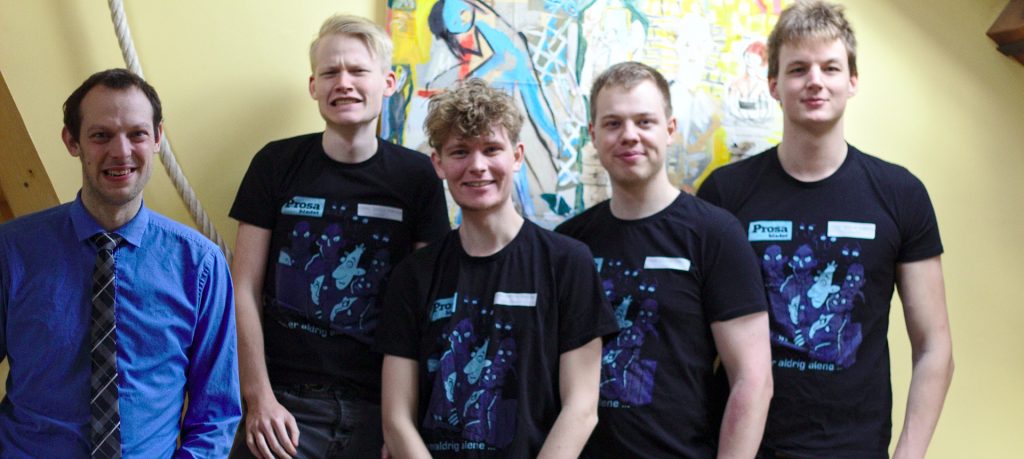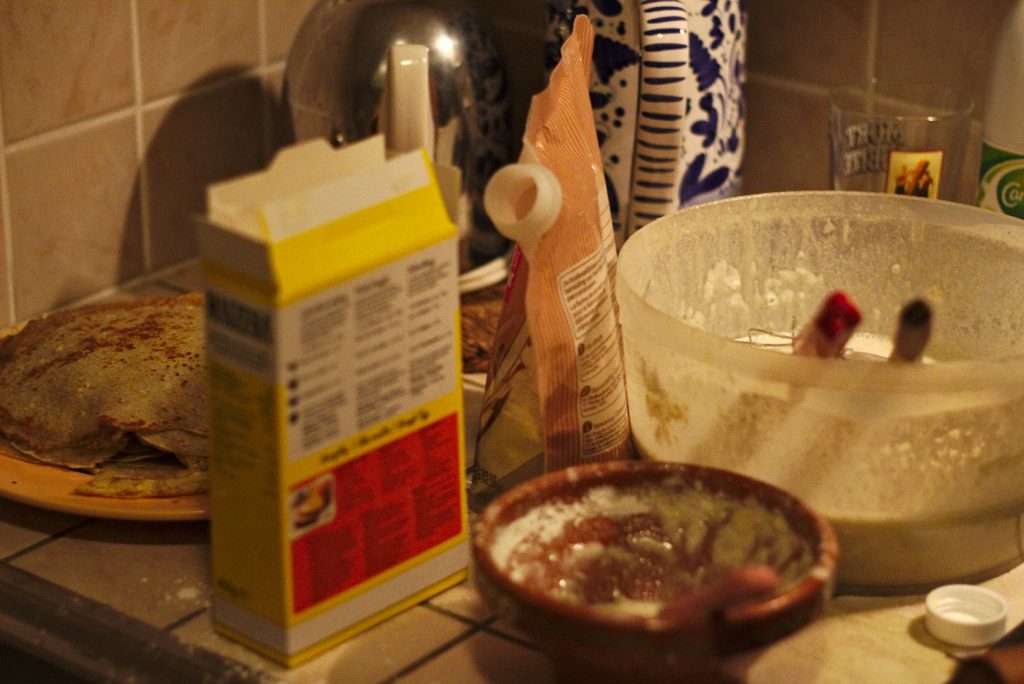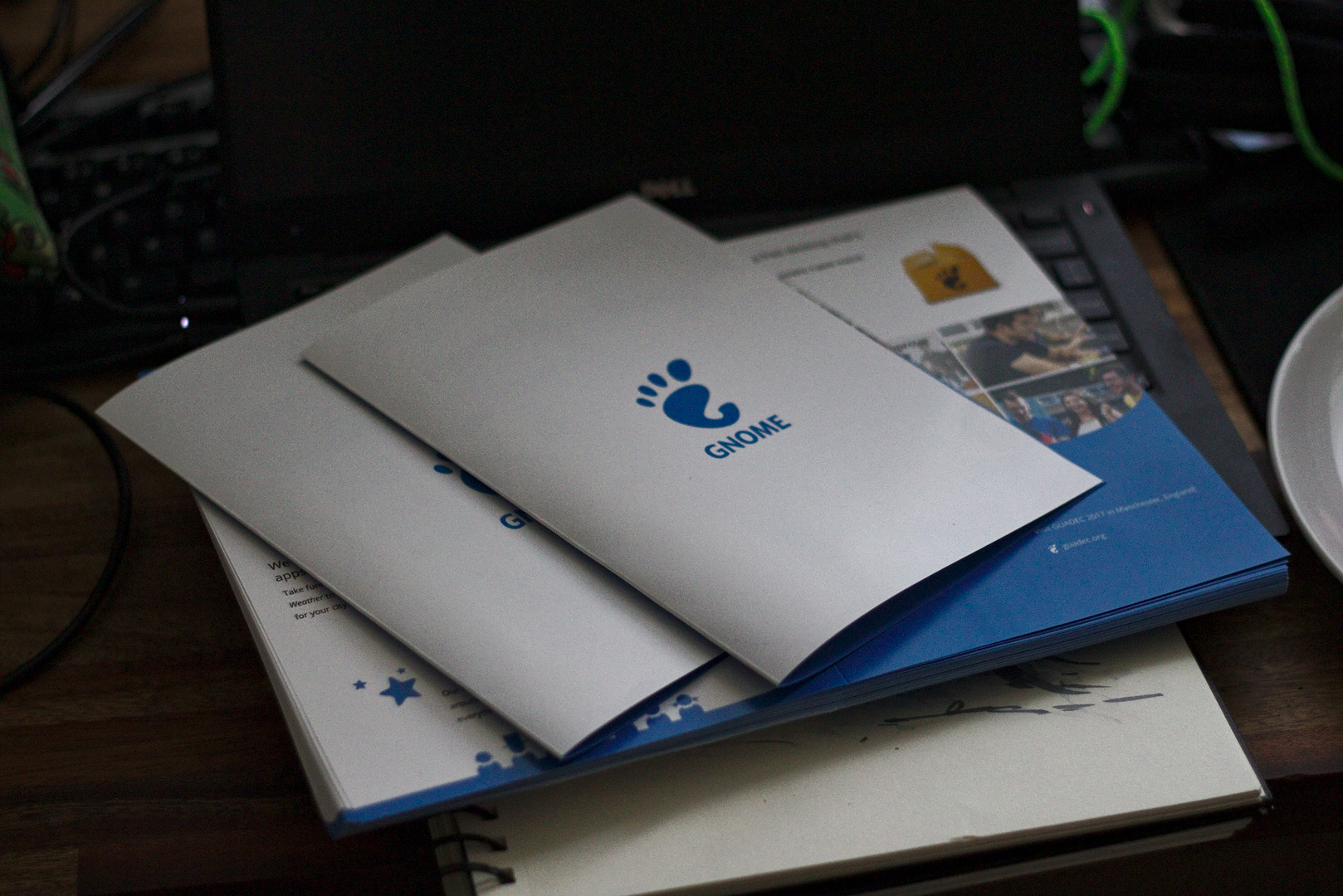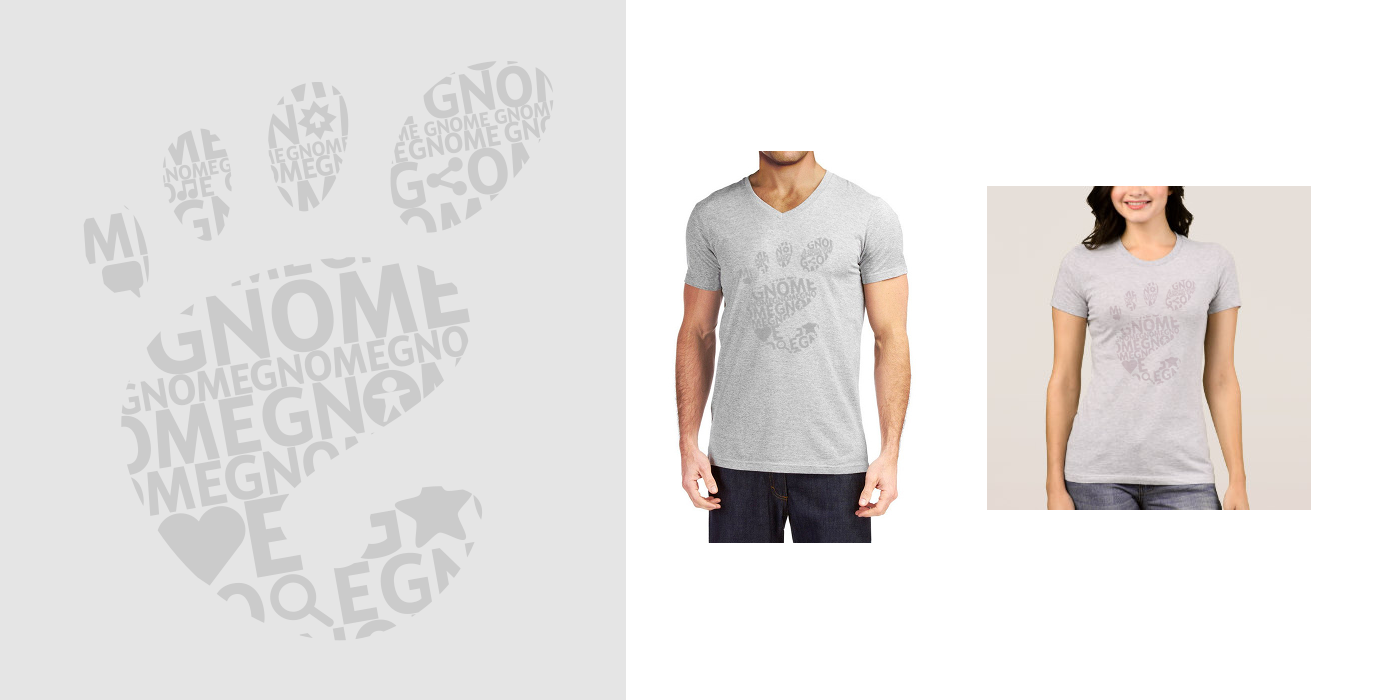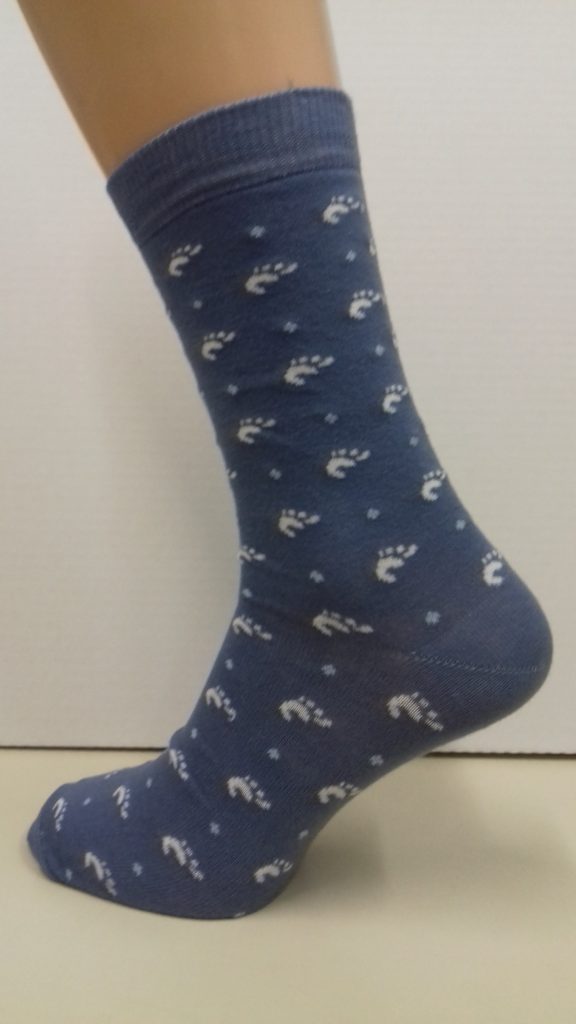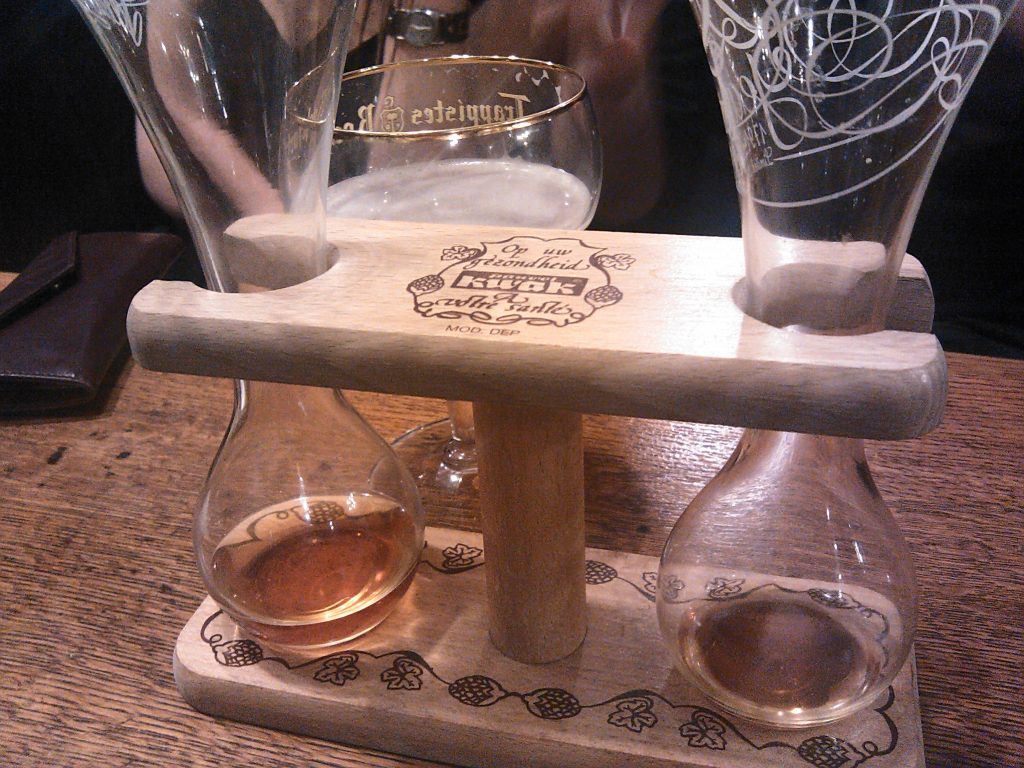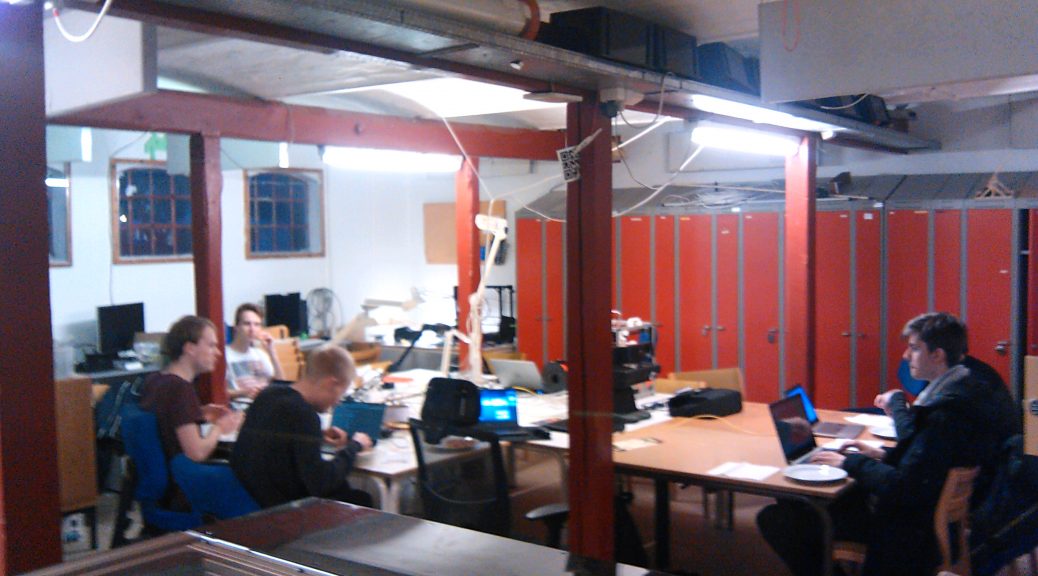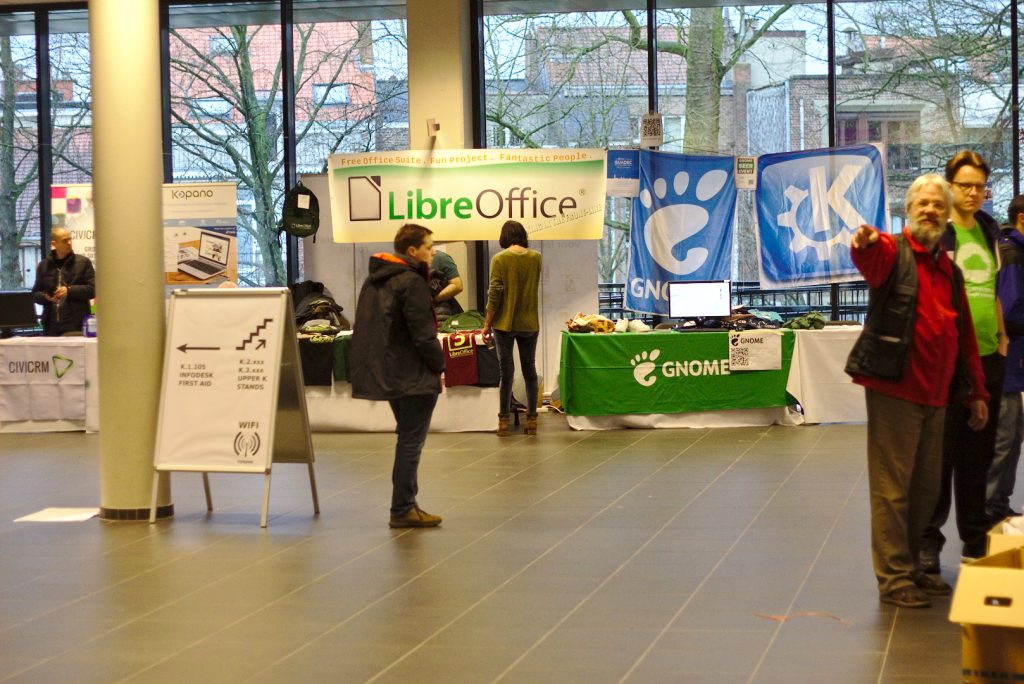
Silent morning at the booths in building K (CC-BY-SA 3.0).
Today I got early up, going with Andreas to the venue, arriving at 8.30 AM. He was going there to open the Open Source Design room, I was going there to open the GNOME booth. After the shift I then decided to wandered around to collect stickers and speak to various projects at their booths.
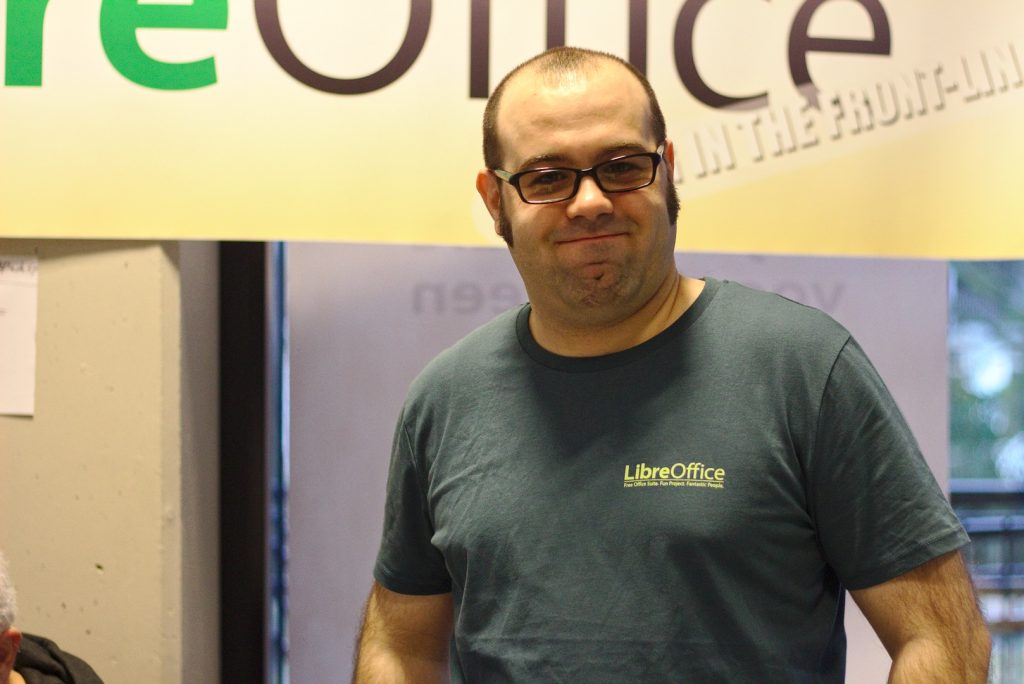
Emiliano at the LibreOffice booth (CC-BY-SA 3.0).
LibreOffice‘s booth who had a stand right next to us and I decided to stop by. In LibreOffice they had just released version 5.3, which among other new features include a renewed user interface. LibreOffice is also making progress on integrating with GTK+3, although I unfortunately missed the talk they had about that the day before. In recent years a new flavor of LibreOffice has also arrived, namely LibreOffice online. This project makes it possible to deploy your own collaborative document editing infrastructure.
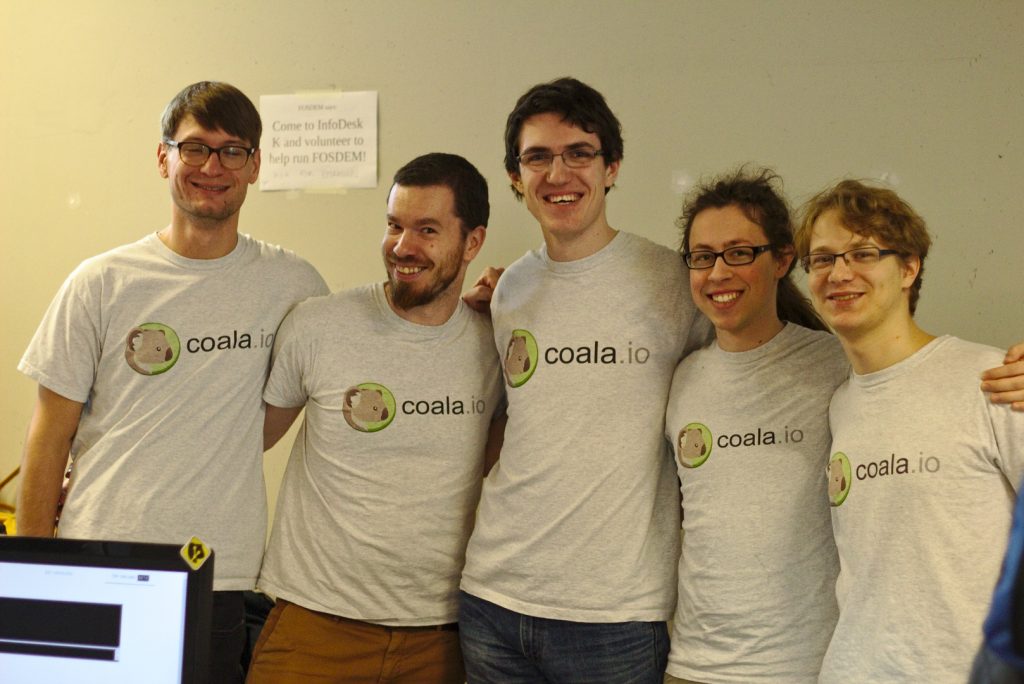
Team Coala at FOSDEM (CC-BY-SA 3.0).
At the Coala booth, I met Lasse whom I know also via the GNOME community. Coala is a type of meta code analysis software. Currently they are reworking internals, and ultimately aiming at simplifying how to perform the code analysis.
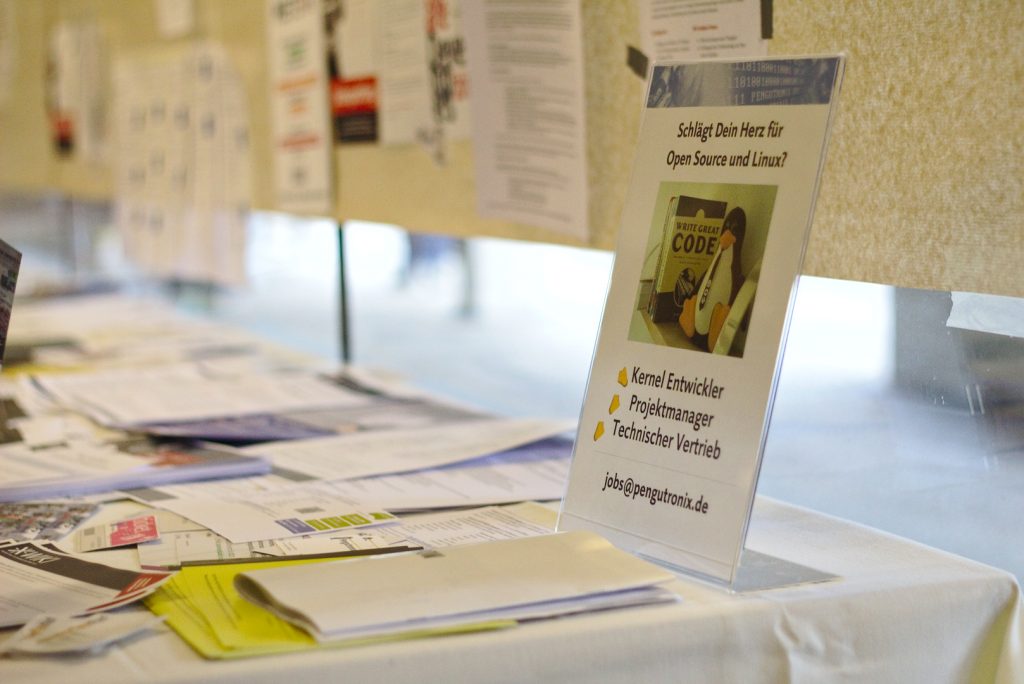
Jobs corner located in Building H. (CC-BY-SA 3.0).
My experience in all three FOSDEM conferences is that they are a good place to network and meet new faces. One thing I dont recall seeing at previous FOSDEMs was job postings. There was a very long wall and table dedicated so that individuals and organizations could advertise jobs, from everything between part-time system administrators and DevOps to full-time software engineers or project managers. Practical!
..and that was the end of my sticker collecting journey. Now I’ve got some, ready to be put on the dorm door at home. :-)
Talks
The rest of the day went with watching talks. In many places there were very large lines of people trying to get in, inside many of the rooms.
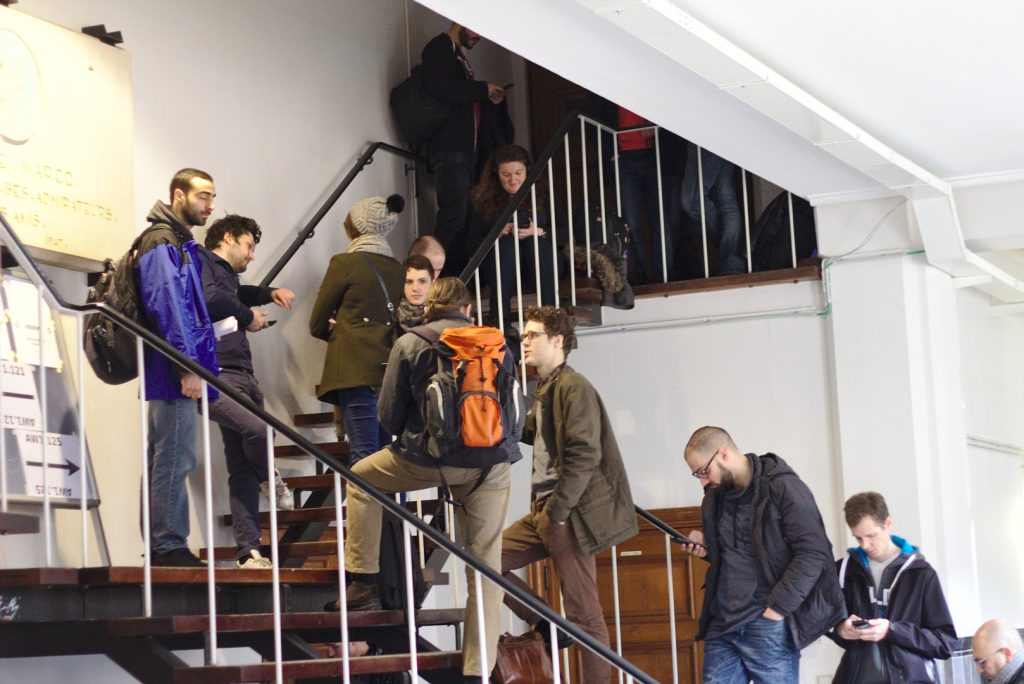
People standing in line to the “Decentralized Internet” room (CC-BY-SA 3.0).
In the end I went to the open source design room, in which i stayed for the rest of the day. This being an open source conference, many of the talks at FOSDEM are focused around software-engineering. The open source design room is the exception. It’s a small room, but there was good space available and I could sit down and do a little work in the meantime.
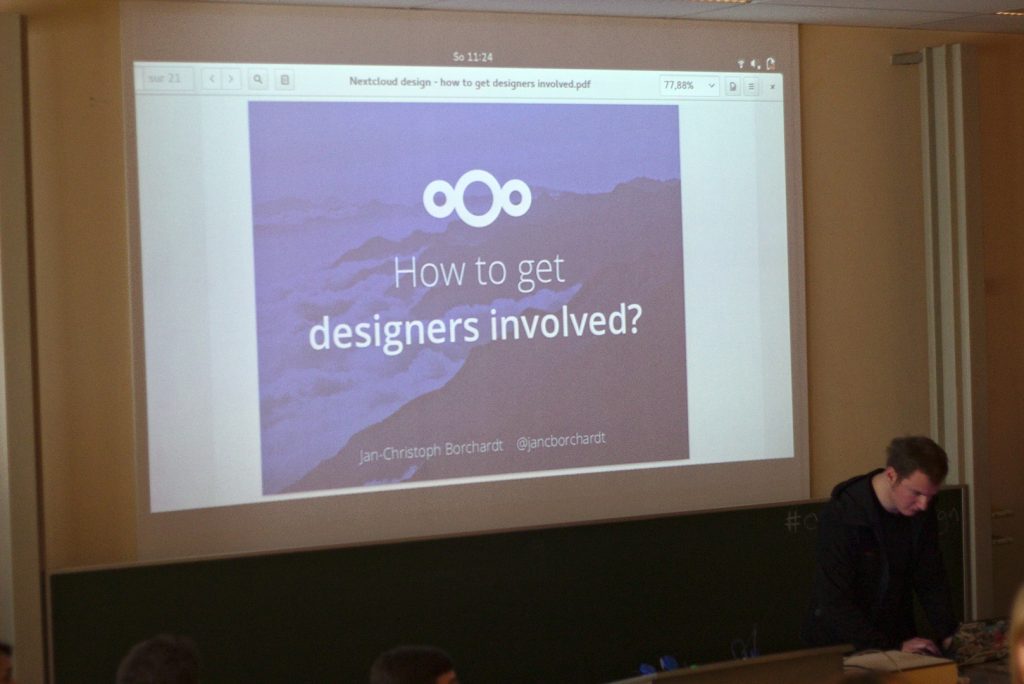
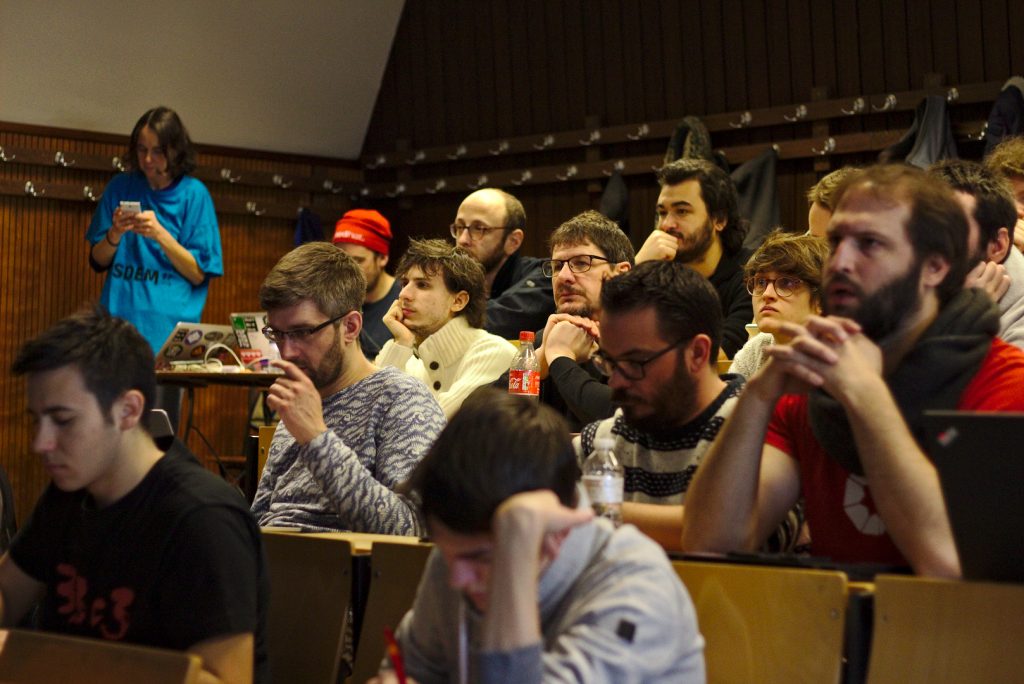
The Open Source Design room (CC-BY-SA 3.0).
What I really like about this room is that it is arranged by the open source design community. It feels very unified that the room directly represents a community, not just a topic. Open source design have its own repository with assets, their own forum etc and it represents designers who do their work in many different open source projects. Many of the talks were reflecting on the methodology we use to do design in open source. Many of the talks revolved around how we can approach user research to inform ourselves when designing. A speaker named Miroslav Mazel spoke about the challenges in conducting user research using local volunteers. One particular difficulty he explained is on how to keep the interest among the volunteers up for conducting it. Andreas was also there to speak about his experience conducting user interviews to inform his work on GNOME Maps. Including the user in the design process helped to recognize new use cases when designing transit routing in GNOME Maps.
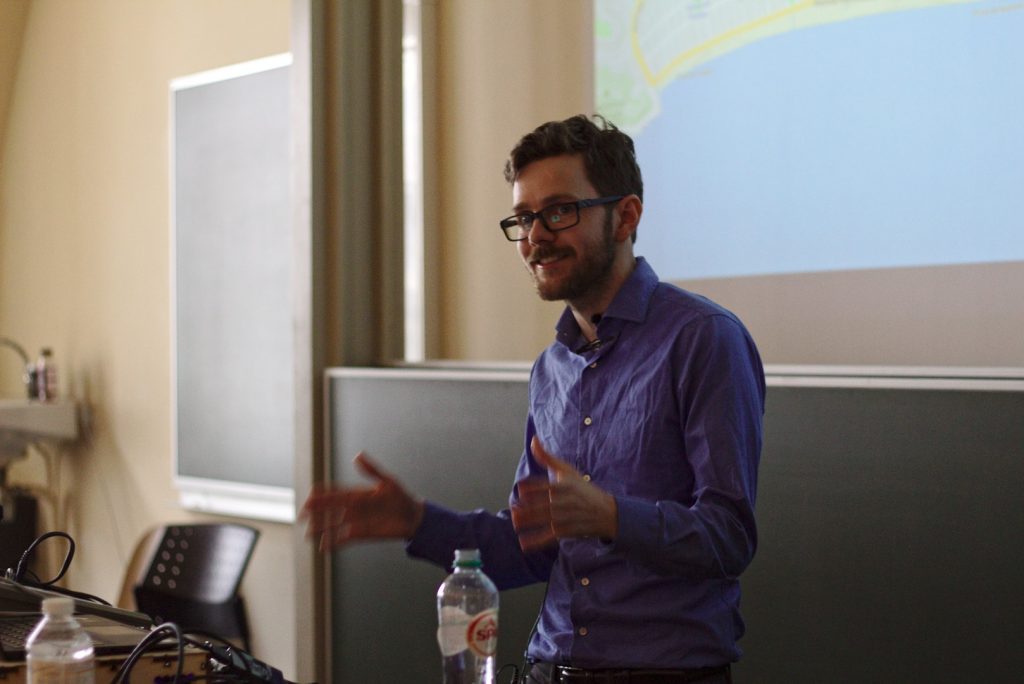
Andreas answering questions during his speech “Interviews as user research” (CC-BY-SA 3.0).
Matthias Clasen and Emel spoke about the design of GNOME Recipes, a new application they are working on for GNOME’s upcoming 20th Anniversary. I think the application looks very promising and am definitely interested in submitting some more recipes!
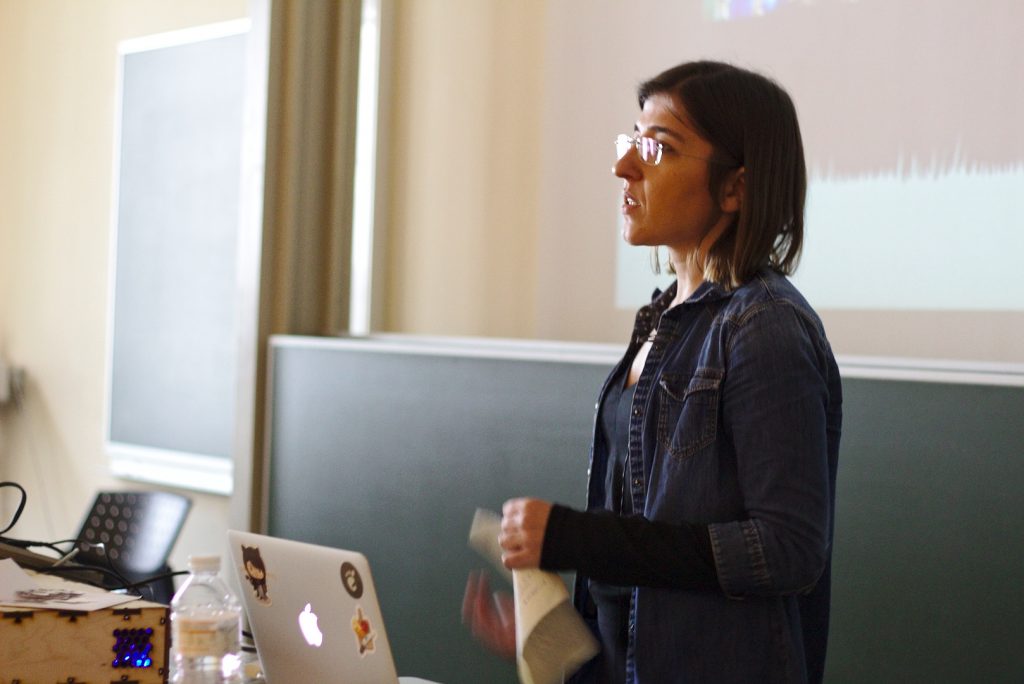
Emel explaining the design of GNOME Recipes (CC-BY-SA 3.0).
Finally Jan, a designer on NextCloud, spoke about getting more designers involved in open source. IT is afterall not only about software engineering, the technology has to be used by people. So design matters and there are many projects which are in dire need of more designers. The open source room concluded with project pitches. Developers of various open source projects would each have three minutes to advertise their projects and make a call for design participation. I really liked this initiative! It’s hard to get started in many open source projects, especially if your role is not a software engineer. I hope for all the developers who stood up and advertised their project, succeeded in reaching out to interested designers. :-)
Home
Monday, we left Belgium. Although I left with an upset stomach and a cold, all in all I did have a really good time. Maybe we will meet again at Open Source Days 2017, foss-north 2017 or GUADEC 2017?
